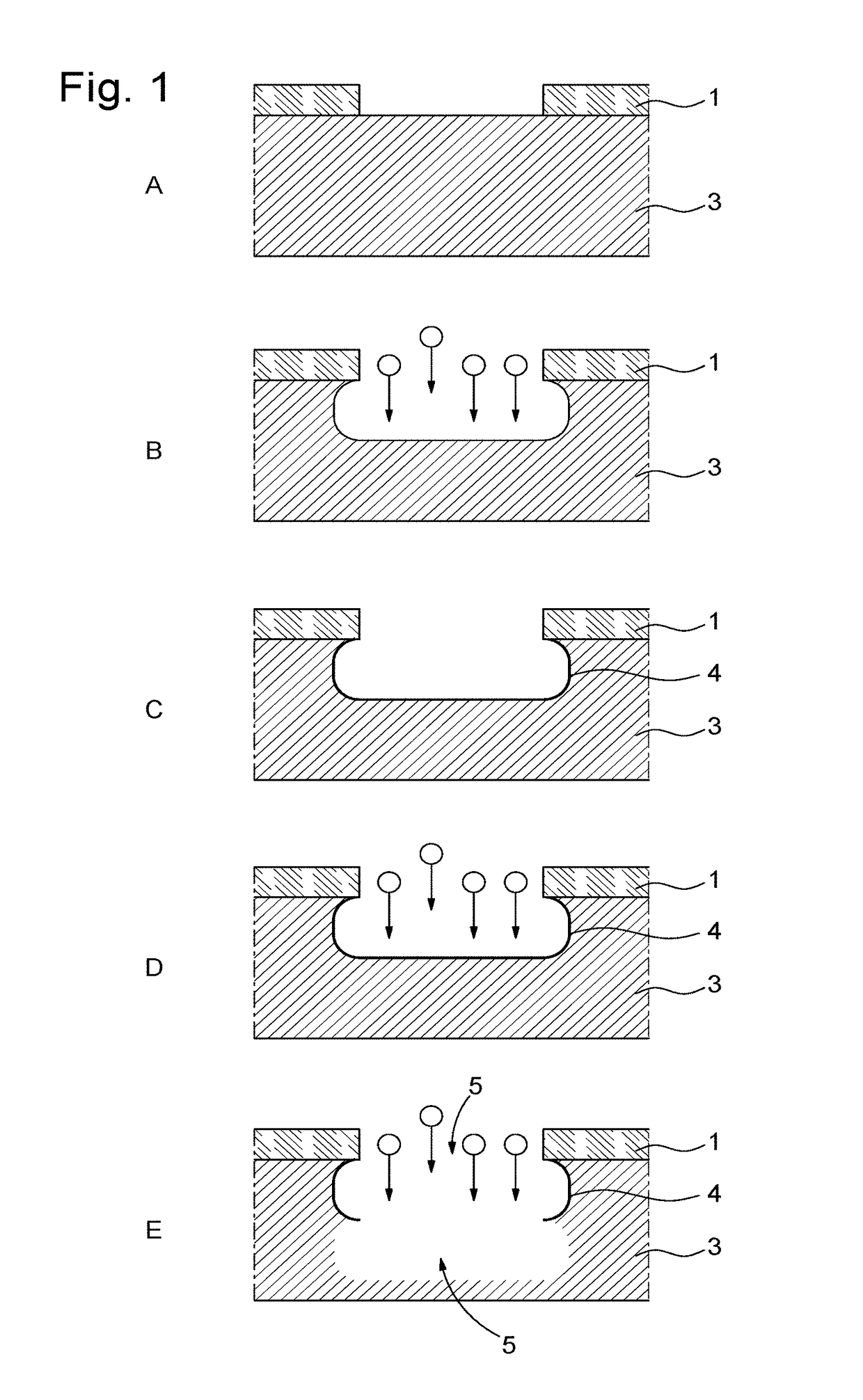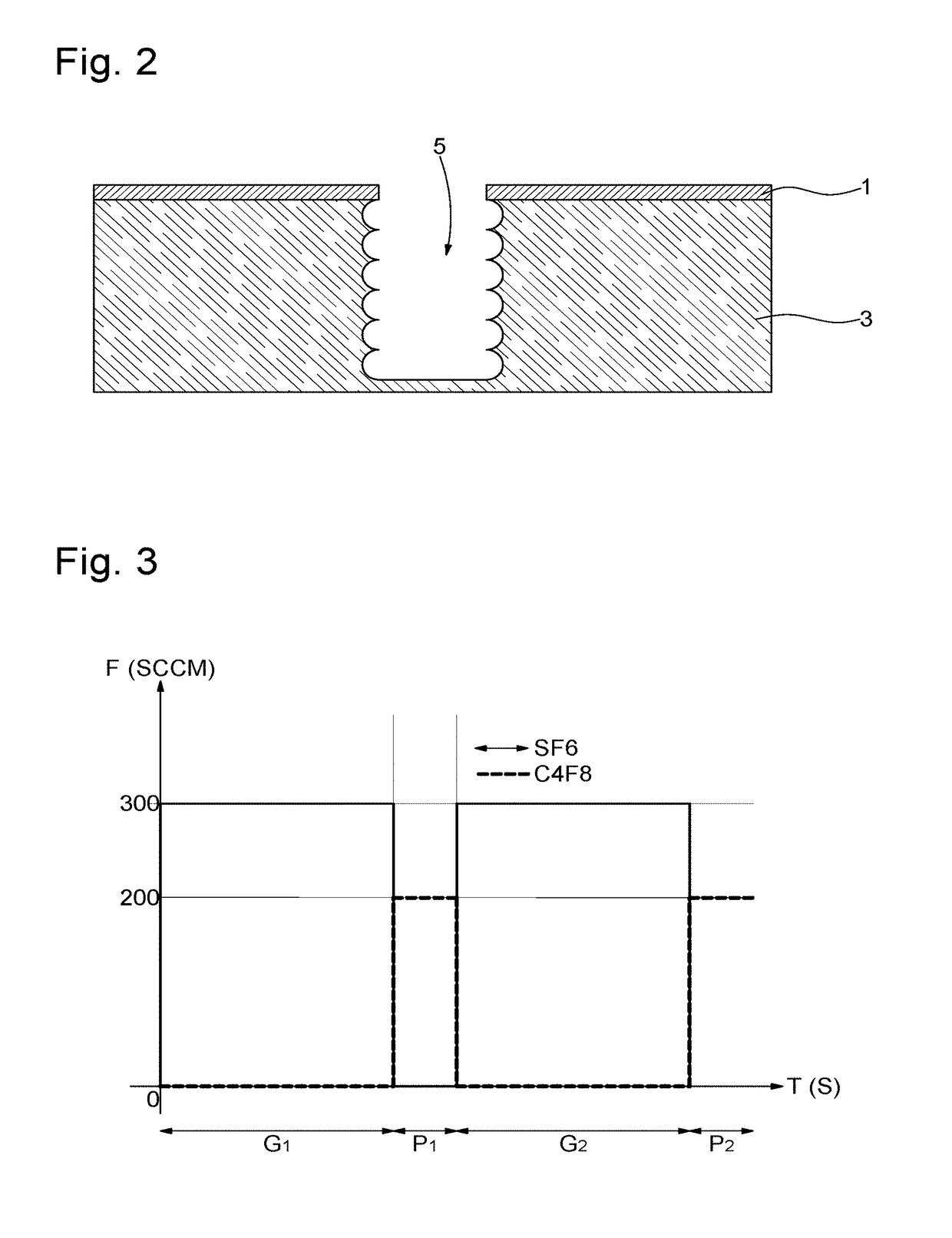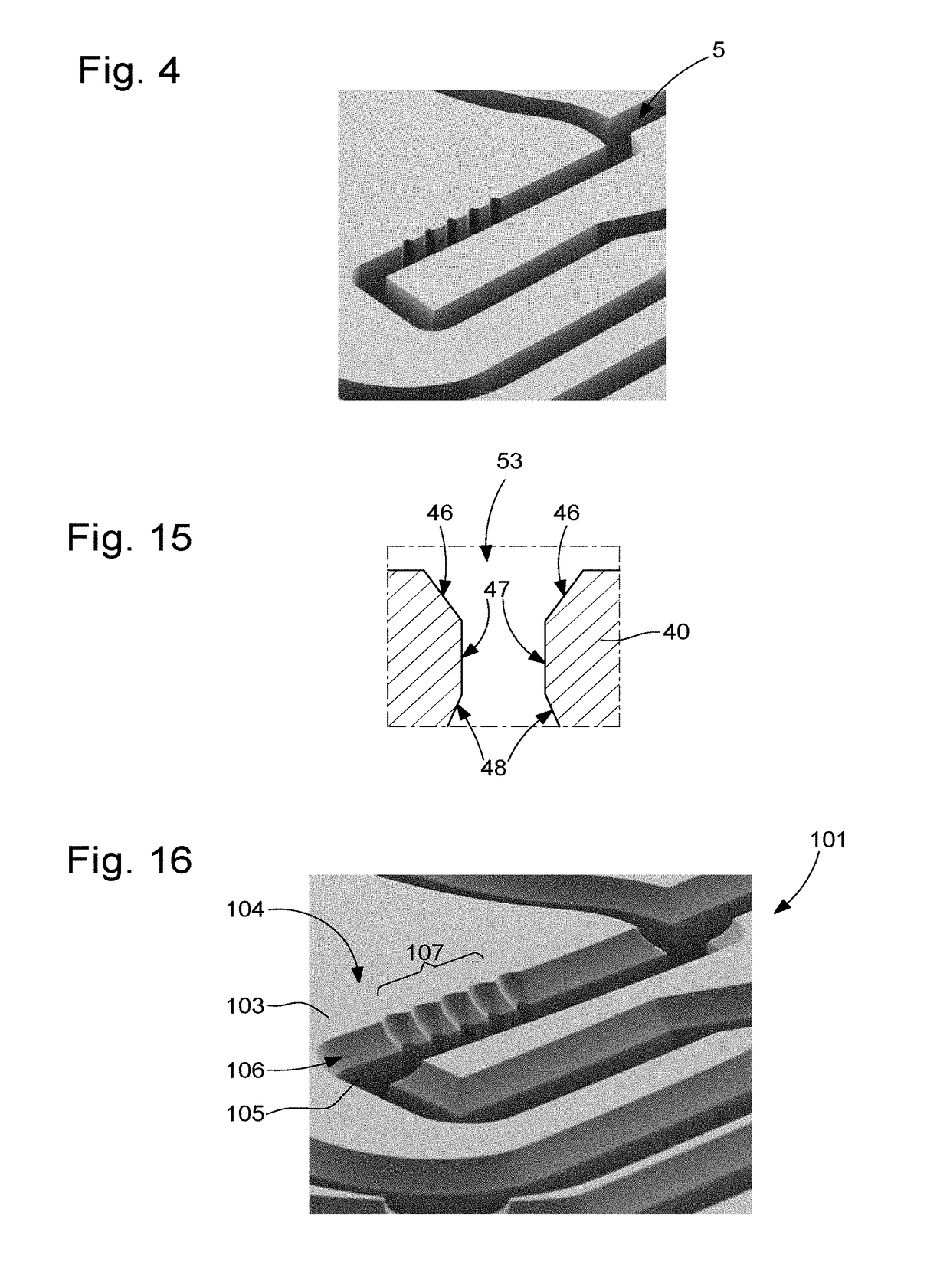Silicon-based component with at least one chamfer and its fabrication method
a technology of micro-mechanical components and chamfers, which is applied in the field of silicon-based micro-mechanical components with at least one chamfer, can solve the problems of unsatisfactory vertical etches b>5/b>, and achieve the effect of improving the mechanical strength of components and improving aesthetics
- Summary
- Abstract
- Description
- Claims
- Application Information
AI Technical Summary
Benefits of technology
Problems solved by technology
Method used
Image
Examples
first embodiment
[0039]The invention relates to a method 11 for fabricating a silicon-based micromechanical part. As illustrated in FIG. 18, method 11 illustrated in a single line, includes a first step 13 consisting of taking a silicon-based substrate.
[0040]The term “silicon-based” means a material including single crystal silicon, doped single crystal silicon, polycrystalline silicon, doped polycrystalline silicon, porous silicon, silicon oxide, quartz, silica, silicon nitride or silicon carbide. Of course, when the silicon-based material is in crystalline phase, any crystalline orientation may be used.
[0041]Typically, as illustrated in FIG. 9, the silicon-based substrate 41 may be a silicon-on-insulator substrate (also known by the abbreviation “SOI”) comprising an upper silicon layer 40 and a lower silicon layer 44 joined by an intermediate silicon oxide layer 42. However, alternatively, the substrate could comprise a silicon layer added to another type of base such as, for example, a metal bas...
second embodiment
[0061]Thus, after step 19 of forming etch 51, method 11 of the second embodiment continues with step 25 of forming a protective layer 52 on oblique walls 46 and substantially vertical walls 47, leaving the bottom of etch 51 without any protective layer, as seen in FIG. 12.
[0062]Preferably, protective layer 52 is formed of silicon oxide. Indeed, as seen in FIGS. 11 and 12, step 25 may then comprise a first phase 24 intended to oxidise the entire top of substrate 41, i.e. mask 43 (when made of silicon oxide), and the walls of etch 51, to form an added thickness on mask 43 and a thickness on oblique walls 46, vertical walls 47 and the bottom of etch 51, to form the protective silicon oxide layer 52, as seen in FIG. 11.
[0063]The second phase 26 could then consist in directionally etching protective layer 52 in order to selectively remove the horizontal silicon oxide surfaces from a part of mask 43 and from the entire part of protective layer 52 only on the bottom of etch 51 as seen in F...
third embodiment
[0080]Thus, after phase 22 of deoxidizing substrate 41, method 11 continues with step 29 of filling a cavity created during etchings 17, 19 and 27 of the micromechanical component, formed by an upper chamfered surface, a peripheral wall and a lower chamfered surface, with a metal or metal alloy in order to provide an attachment to the micromechanical component.
[0081]In a preferred example, lower layer 44 of substrate 41 is highly doped and used as the direct or indirect base for filling by electroplating. Thus, step 29 could include a first phase 30 of forming a mould, for example made of photosensitive resin, on top of mask 43 and in a part of etch 53. A second phase 32 could consist in electroplating a metal part 112, from lower layer 44, at least between the micromechanical silicon-based component and a part of the mould formed in etch 53. Finally, a third phase 34 could consist in removing the mould formed in the phase 30.
[0082]The third embodiment ends with phase 23 of releasi...
PUM
| Property | Measurement | Unit |
|---|---|---|
| angle | aaaaa | aaaaa |
| angle | aaaaa | aaaaa |
| angle | aaaaa | aaaaa |
Abstract
Description
Claims
Application Information
 Login to View More
Login to View More - R&D
- Intellectual Property
- Life Sciences
- Materials
- Tech Scout
- Unparalleled Data Quality
- Higher Quality Content
- 60% Fewer Hallucinations
Browse by: Latest US Patents, China's latest patents, Technical Efficacy Thesaurus, Application Domain, Technology Topic, Popular Technical Reports.
© 2025 PatSnap. All rights reserved.Legal|Privacy policy|Modern Slavery Act Transparency Statement|Sitemap|About US| Contact US: help@patsnap.com



